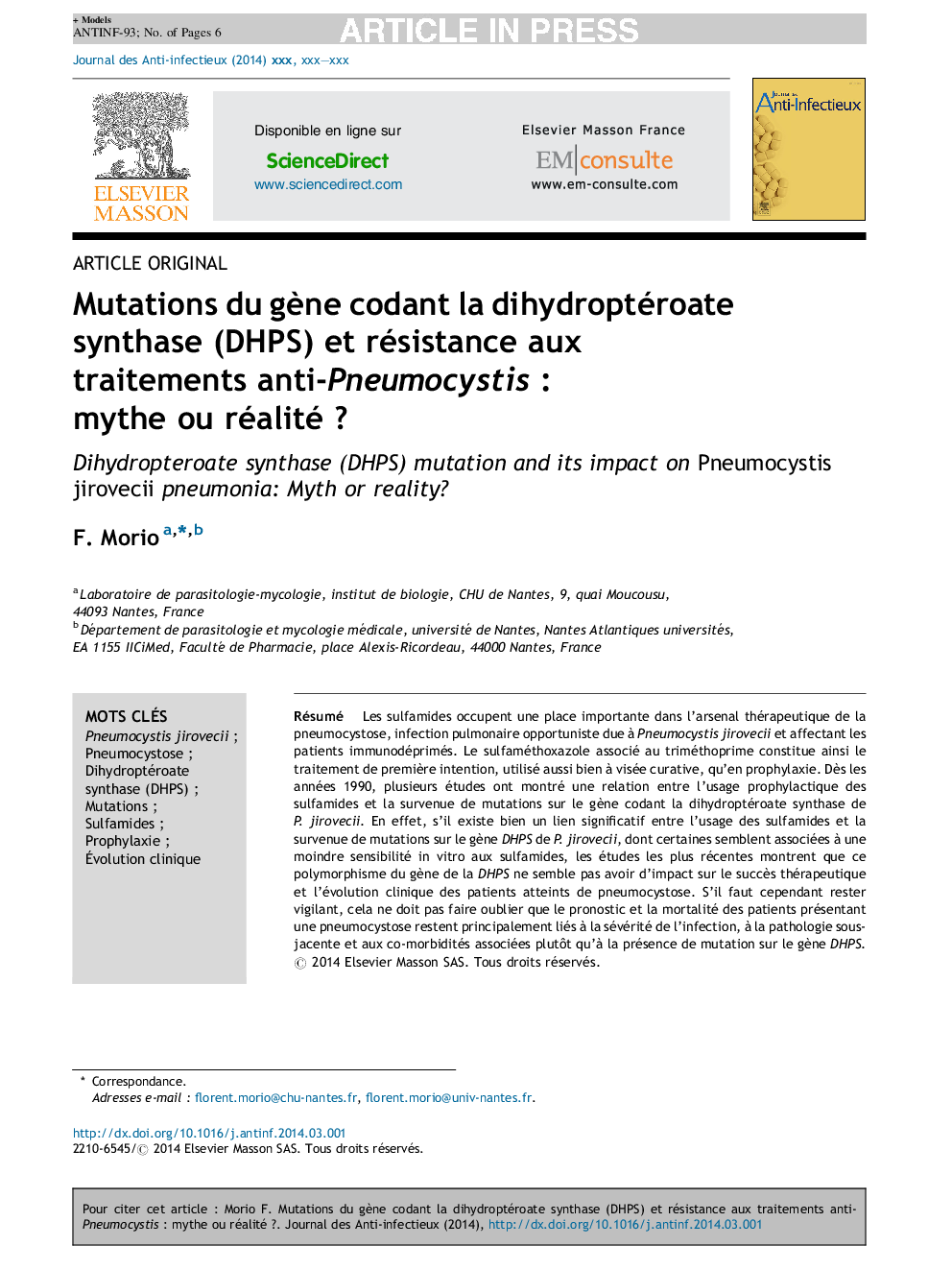| Article ID | Journal | Published Year | Pages | File Type |
|---|---|---|---|---|
| 3405513 | Journal des Anti-infectieux | 2014 | 6 Pages |
Abstract
Sulfa drugs still occupy a major place in the therapeutic arsenal of Pneumocystis jirovecii pneumonia (PcP), an opportunistic pulmonary infection affecting immunocompromised patients. Sulfamethoxazole associated to trimethoprim (Bactrim®) is the first-line drug, being used for both treatment and prophylaxis of Pneumocystis pneumonia. By the 1990s, several authors have shown a relationship between sulfa drugs exposure during prophylaxis and the occurrence of mutations in the P. jirovecii dihydropteroate synthase-encoding gene (DHPS). Whereas there is now evidence for a link between sulfa drugs exposure and the acquisition of mutations in the P. jirovecii DHPS gene, some of them being possibly associated with a reduced in vitro susceptibility to sulfa drugs, recent studies suggest that this genetic polymorphism does not have an impact neither on clinical success nor on mortality in patients suffering from PcP.
Keywords
Related Topics
Health Sciences
Medicine and Dentistry
Infectious Diseases
Authors
F. Morio,
